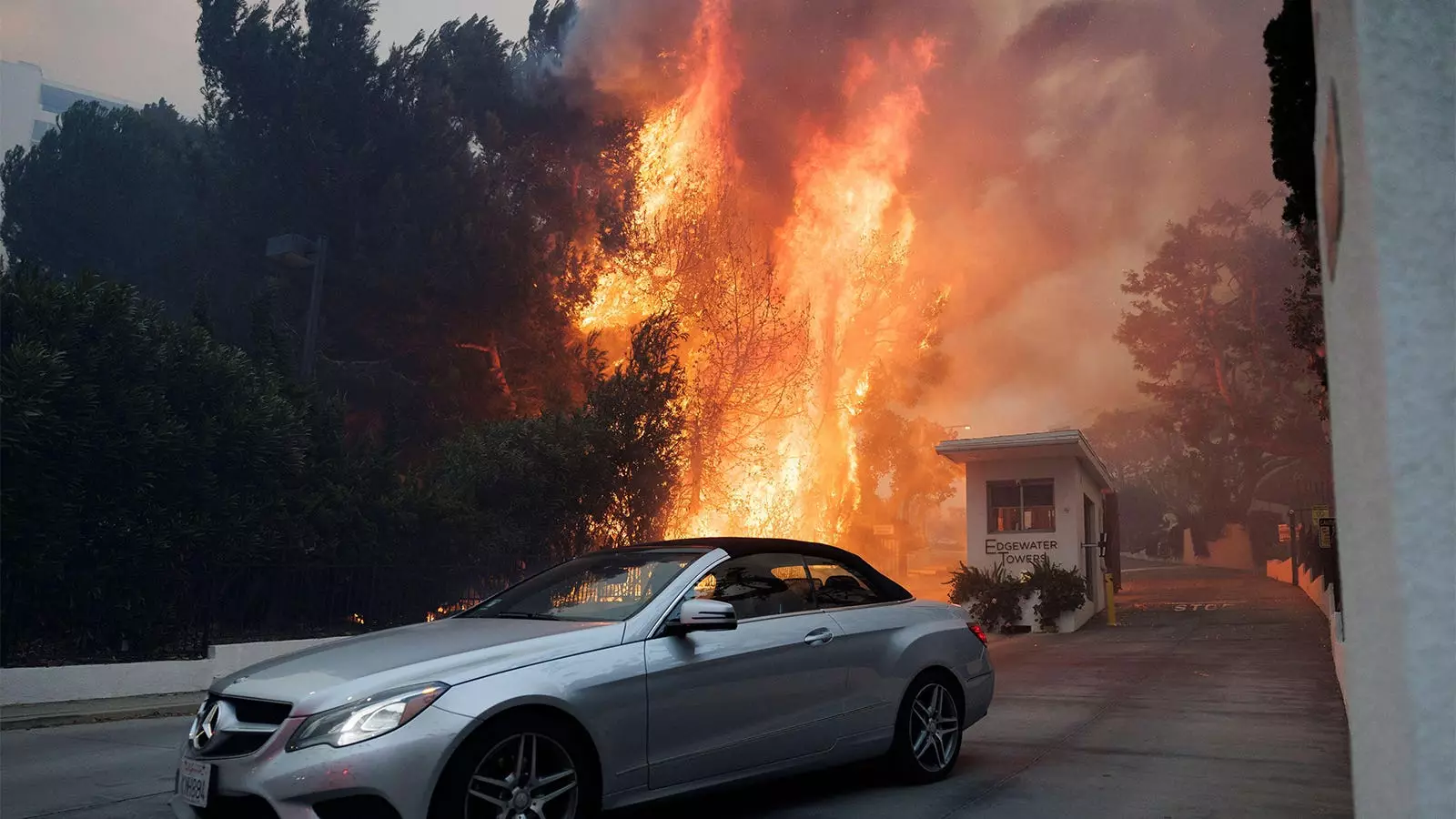This past Friday, while driving along the 405 Freeway in Los Angeles, an unsettling sight unfolded before me. The normally bustling highway was eerily quiet, a stark contrast to the usual congestion of a Friday evening. Above, the skies were punctuated by smoky tendrils emanating from the Palisades fire. Their twisted forms danced ominously in the warm breeze, casting shadows on the world below as if nature itself was issuing a warning. The surreal landscape bore a resemblance to a painting by Salvador Dalí, while the unsettling atmosphere amplified this sense of dread. As I navigated through the Sepulveda Pass, I felt the ash settling like a fine mist around my vehicle, a suffocating reminder of nature’s unyielding power.
As I transitioned onto the 101 Freeway and beheld the hills glowing ominously with fiery colors reminiscent of an erupting volcano, it became apparent that Los Angeles was facing an unprecedented environmental dilemma. The firefront stretched far and wide, merging urban spaces with wilderness and posing dire threats not only to wildlife but also to the communities nestled at the urban-wildland interface. This wildfire nightmare was unique; its ramifications extended to the toxic cocktail of chemicals released when man-made structures succumbed to flames. The trees might burn, but so do homes and businesses—each releasing a myriad of hazardous substances, from particulate matter to chemicals long since cast aside by regulatory measures.
As residents inhaled the smoke-laden air, the health implications became glaringly evident. The smoke generated particulates such as PM2.5, which infiltrate the lungs and bloodstream, presenting immediate and long-term health risks. While first responders to the fires diligently worked to protect lives and property, they themselves found their health compromised by inhaling hazardous substances. Unfortunately, the sight of those who had succumbed to the fire does not end with the physical devastation; it extends to the hospitals where an increasing number of individuals sought medical care for respiratory issues, anxiety, and post-traumatic stress, evidence of a battlefield left in the wake of flame and fury.
The aftereffects of this cataclysm extend beyond mere injuries. Communities are now facing the prospect of chronic disease due to prolonged exposure to toxic air. Concerns regarding the increased likelihood of cancer and other diseases are mounting, particularly analogous to the fallout experienced by first responders and residents after the attacks on September 11. Mental health crises will echo long after the fires have been extinguished—families who have lost everything confront challenges that not only affect their well-being but may redefine what “home” means to them. Such crises disproportionately affect vulnerable populations, with children and the elderly at particular risk.
As an occupational and environmental medicine physician, I often confront the painful reality of how environmental hardships can morph into a health crisis. The ongoing wildfires serve as a harsh illustration of this intersection between environment and health. Tragically, the medical response here is sidelined, despite their proven efficacy during past crises like the World Trade Center attacks and the COVID-19 pandemic. We have repeatedly relied on our expertise to ensure ongoing health monitoring for first responders and create actionable care strategies within broader healthcare frameworks.
The urgency of these environmental conflagrations underscores the need for real-time monitoring systems that fuse air quality data, chemical pollutants, and community health resources into a user-friendly dashboard. This is not merely an ideal; it is an imperative that demands immediate attention from public health officials, disaster response teams, and our healthcare systems as a whole.
However, a persistent shortage of trained professionals hampers effective action. As of 2020, the number of accredited occupational and environmental residency programs in the United States had dwindled alarmingly, closing doors to new talents equipped to address these critical health needs. As our cities confront climate-induced calamities, cultivating resilience becomes paramount, not just in healthcare but across the spectrum of community planning and public policy.
The pathway to resilience lies not merely in responding to crises as they unfold but proactively utilizing data-driven strategies to mitigate environmental damage and its medical repercussions. By empowering our workforce with cutting-edge technology, we can amplify capacities for monitoring environmental hazards, aligning public health efforts with urgent community needs.
In the face of ash-filled skies, it’s vital to renew our commitment to health and sustainability. By banding together as a community—leveraging our unique medical expertise, community engagement, and technological innovation—we can rise from the ashes and craft a future that thrives amid adversity. Los Angeles must emerge not only as a city bearing scars but as a resolute testament to human endurance, a lighthouse guiding the way forward amid the darkness of environmental crises. Together, we can reclaim our city, ensuring future generations inherit a landscape teeming not just with life, but with hope.

